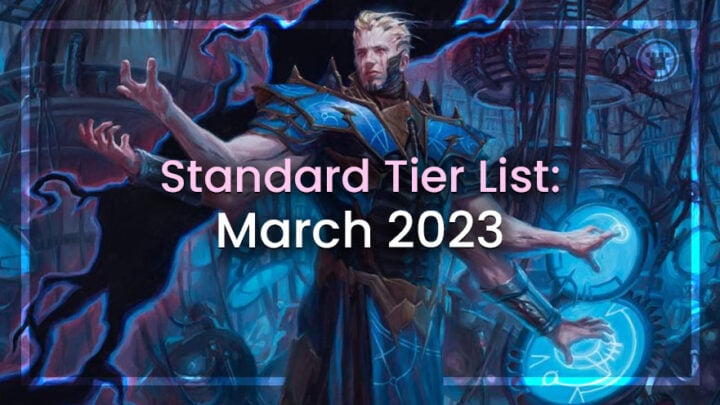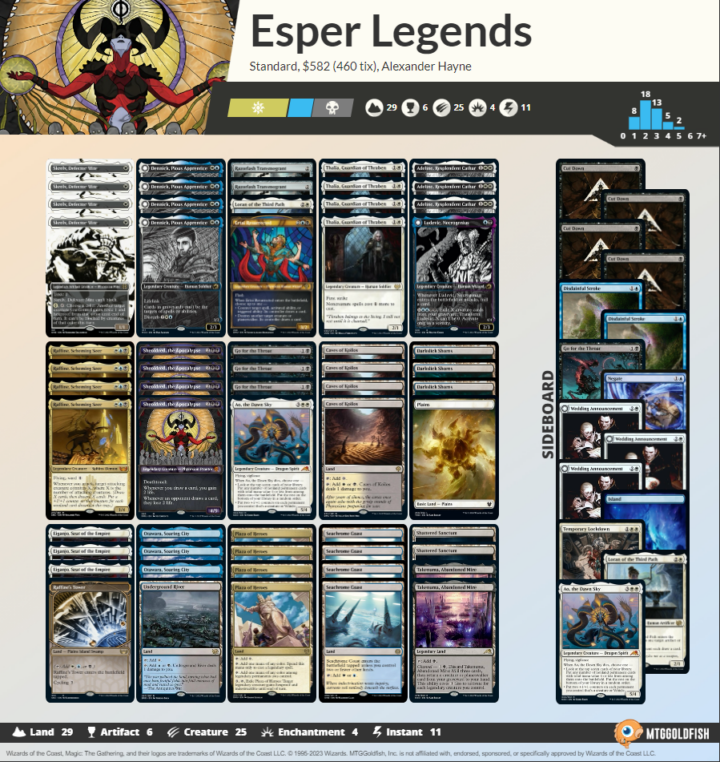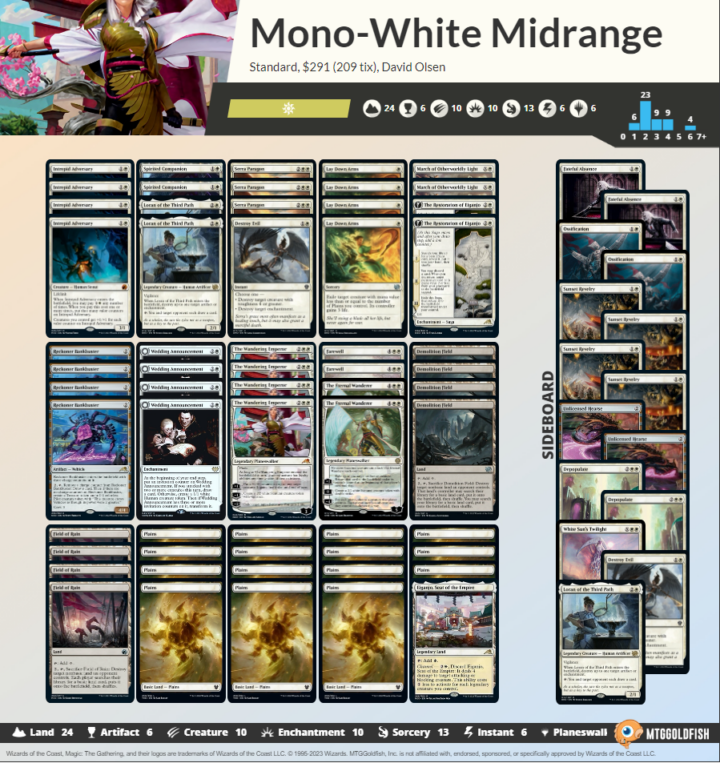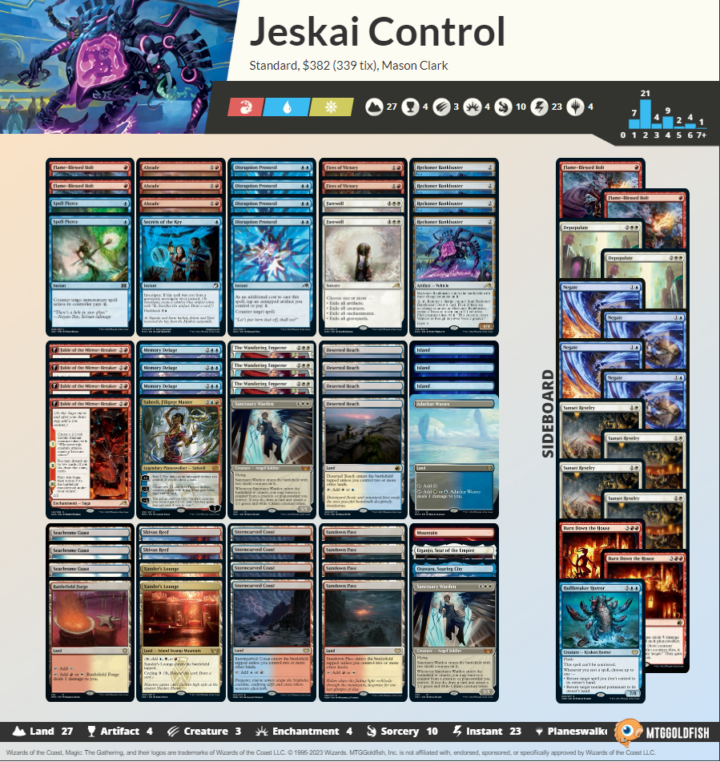We are one week away from the last round of regional championships for this cycle. Standard has taken many twists and turns throughout the past months, yet every single week players would say Grixis is the best, most adaptable deck for whatever is going on. Then a new deck would appear, seemingly out of nowhere, to challenge that dynamic and ask new questions of our expectations. This led to a constantly changing and evolving format that has been fun to play week in and week out. With so much turmoil, it’s the perfect opportunity for a little tier list to go over the format and help players get you ready for these last events.
But before we dive into the list and breakdown a few standouts, I want to lay out my grading criteria to help contextualize my recommendations:
S-Tier: Decks that are above the rest. This is normally the default “best deck in the format” and the deck(s) you should have in mind when building or picking your deck.
A-Tier: Decks that are great. These decks are knocking on the door of S Tier, but they may have a small weakness that keeps them out of the upper echelon.
B-Tier: Good, solid decks. You wouldn’t be surprised if a B Tier deck takes down an event, but they have bigger weaknesses or liabilities than the decks in A Tier.
C-Tier: Decks that are totally fine, but not notable. These decks aren’t exactly tearing up the tournament or ladder scene, but you should expect to face them every now and then.
D-Tier: Decks with strong elements, but that generally aren’t great choices compared to the rest of the format.
S Tier
Grixis, Esper
While Grixis is the deck every player turns to when thinking of this format, fewer people have offered Esper nearly the same respect despite the deck being the other best-performing list at multiple events.
So, what about Esper Legends has so many players turning to it despite so few talking about it?
The first and greatest strength of the deck is its ability to curve out. This deck’s curve can often be very back breaking: Thalia-into-Raffine-into-Sheoldred is a curve basically no one can beat. And given being a powerful, proactive deck that can play long games is often a key for success in Standard, this deck packs that in spades.
Another result of the deck’s powerful curve is that it’s really good at mulliganing. Being the best deck for a mulligan in a format is something players often don’t respect as much as they should.
For a long time, Tron used to be one of the best decks in Modern for this very reason. In that context, the deck could go all the way to three cards and still come out on top. The Esper Legends deck can’t go quite that low, but it can very easily win mulls to five. Having that kind of staying power is incredibly useful.
The real trick to the Esper Legends deck, though, is it is just the best aggressive deck in the format on any given weekend. It can go long but also have back breaking aggressive draws that other decks cannot beat. That’s why it would be my main pick for the RC in San Diego if I was playing (I have to skip the event). In the end, this deck both leverages skill and punishes people
A tier
Mono White, Rakdos Midrange, Azorious Soldiers, Selesnya Toxic
This is the best control deck in the format. While not having counter spells like a typical control deck, this list just chooses to have a pile of cards that one for one your opponent and run them out of steam. Then you take over the game with whatever is left.
This is doable since all your cards are a two for one. You can compare this deck to the four color control deck in Modern, in a way. Both look to just trade resources off and then win, eventually. While this deck doesn’t have cards like Omnath to help stabilize, the comparison is more right than wrong.
Cards like Serra Paragon do a lot of heavy lifting instead. Players are always quick to point out Wedding Announcement and The Restoration of Eiganjo as the cards carrying this deck. While those cards are great, it cannot be understated just how much Serra Paragon can run away with a game.
We already mentioned how every card is a two for one, and Paragon gives cards a second life. Getting to use cards like Spirited Companion twice really makes up for how low impact they are in the early game. Serra Paragon also helps abuse another aspect of attack this deck has: mana denial
The Standard format is filled with a three color deck that runs almost no basics. So, Mono White Control plays four Field or Ruin and Demolition Field (which are basically the same card). And Serra Paragon actually lets you replay these cards, allowing you to cut your opponents off mana very easily!
As this deck has become a more known part of the meta, players have added one or two more basics to their lists. But given how long games go with this deck, that won’t save them forever, and you can realistically really constrict someone’s mana if they stumble.
This mono white deck can grind with the best of them, and if you’re looking for a good control deck with clean mana this one’s for you.
B tier
Jund Midrange, Rakdos Reanimator, Mono Blue Delver
C tier
Mono Red, Jeskai Control, Five Color Reanimator
This Jeskai control deck top 8’d the second Canadian regional championship this past weekend and it’s a very interesting deck. Unlike our last deck, this is a much more classical control deck. You have a pile of card advantage, some counter magic and planeswalkers to win the game.
The strength of this deck is just how targeted toward last weekend’s metagame it is. Every choice makes sense for trying to beat either Esper Legends or Grixis Midrange.
Flame Blessed-Bolt is great versus Razorlash Transmogrant and Thalia, Guardian of Thraben — two popular threats in this format. It’s also a great card against all the Aggro decks. Jeskai Control also runs Farewell in high numbers to punish players learning on flooding the board.
Then there’s a pile of Memory Deluge so you can always secure the long game — and that doesn’t account for the bevy of other choices in this list.
Disruption Protocol is the most unique choice here, a spell not seen often in Standard. This conditional Counterspell is very strong in the early turns when players are trying to curve out, doing a Make Disappear impression until it becomes just a hard Counterspell in the late game.
The ability to have an actual two mana Counterspell is something you can’t underestimate in a format like Standard, where games naturally go longer and require more exchanges of resources.
End step
This standard has been one of the best and most fun to play in a long time. Players grinding this format leading into their RCs have been met with a great experience and fun games! And even if you aren’t competing at this level, If you are interested in playing Standard, now is the time to dive in.

Mason Clark is a grinder in every corner of the game who has played at the pro level and on the SCG Tour with Team Nova. Whether he’s competing in Standard, Historic or Modern, Mason plays with one goal in mind: to be a better player than he was the day before. Check out his podcast, Constructed Criticism, and catch his streams on Twitch.




